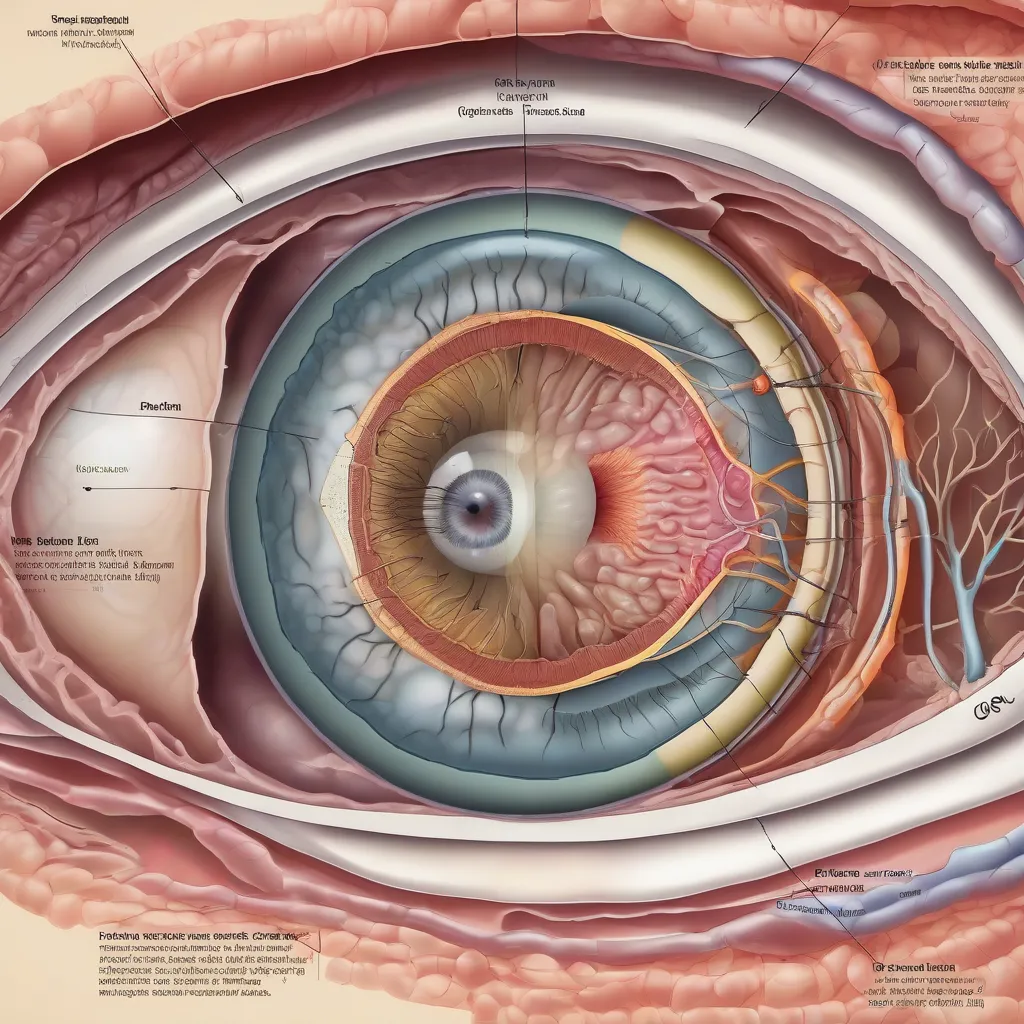Have you ever stood on the edge of the Grand Canyon, mesmerized by the layers of color and light, and wondered how your eyes capture such breathtaking beauty? It all starts with a single ray of light and a fascinating journey through the intricate structure of the human eye.
The Path of Light: From Cornea to Optic Nerve
Entering the Eye: Cornea and Pupil
Imagine light as a traveler embarking on a journey. Its first stop is the cornea, the clear, dome-shaped outer layer of your eye. Like a welcoming archway, the cornea acts as the eye’s window, bending light rays and directing them inward.
Next, light passes through the pupil, a small, adjustable opening that controls the amount of light entering the eye. Think of it as the doorway to a grand cathedral, widening in dim lighting like at the Griffith Observatory at night, and narrowing in bright sunlight like a midday stroll down Venice Beach.
Focusing the Image: Lens and Retina
Once through the pupil, light encounters the lens, a flexible, transparent structure behind the iris. Like a skilled photographer adjusting their camera lens, the eye’s lens changes shape to focus light onto the retina, a light-sensitive layer lining the back of the eye. This process ensures that whether you’re admiring the intricate details of a mosaic in Barcelona or gazing at the vastness of the Sahara Desert, the image projected onto your retina is crisp and clear.
Transforming Light into Signals: Photoreceptors and the Optic Nerve
The retina is where the magic truly happens. It’s home to millions of specialized cells called photoreceptors, which act like tiny light detectors. These photoreceptors, named rods and cones for their shapes, convert light energy into electrical signals. Rods are highly sensitive to light and allow us to see in low light conditions, like navigating a dimly lit Parisian cafe. Cones, on the other hand, are responsible for color vision, letting us perceive the vibrant hues of a sunset over the Greek Isles.
These electrical signals then travel through the optic nerve, a bundle of nerve fibers connecting the eye to the brain. Imagine it as a high-speed train carrying crucial visual information from the eye to the brain’s visual cortex.
From Eye to Brain: Perception and Interpretation
Once the signals reach the brain, a remarkable transformation occurs. The brain processes the information, combining it with our memories, experiences, and even emotions to create the final visual image. This intricate process is what allows us to appreciate the beauty of a sunrise over the Taj Mahal or the awe-inspiring Northern Lights dancing across the night sky.
 Eye Anatomy
Eye Anatomy
FAQs: Unraveling the Mysteries of Vision
Q: Why do some people need glasses or contact lenses?
A: Just like a camera lens can lose its ability to focus properly, sometimes the shape of a person’s eye prevents light from focusing directly on the retina. This can result in blurry vision. Glasses and contact lenses act as corrective lenses, helping to refocus light properly and provide clearer vision.
Q: How does our depth perception work?
A: Our two eyes work together to create a three-dimensional image of the world around us. Each eye sees the world from a slightly different angle, and our brain combines these two images to create depth perception. This is why activities like hiking the Inca Trail or even just navigating a crowded marketplace rely heavily on our depth perception.
Q: What are some tips for maintaining good eye health?
A: Taking care of your eyes is crucial for maintaining good vision throughout your life. Some simple steps include scheduling regular eye exams, protecting your eyes from the sun with sunglasses, eating a balanced diet rich in vitamins and antioxidants, and taking breaks from digital screens to prevent eye strain.
Beyond the Horizon: Exploring the World with Clear Vision
Understanding How Light Travels Through The Eye gives us a newfound appreciation for the miracle of sight. Every time we open our eyes, we’re embarking on a journey of discovery, experiencing the world through the lens of this incredible sense. So, whether you’re planning your next adventure to the bustling streets of Tokyo or the serene beaches of Bali, remember to take care of your eyes and appreciate the beauty that surrounds you.
 Woman Admiring Mountains
Woman Admiring Mountains
For those seeking to delve deeper into the wonders of human biology and travel, check out our related article on “How Does a Nerve Impulse Travel?” And if you’re looking for the perfect travel companion to capture those visual memories, Travelcar.edu.vn offers a curated selection of travel cameras to suit every adventure.
Don’t forget to share your thoughts and travel experiences in the comments below! We’d love to hear about the breathtaking sights you’ve captured with your own eyes.